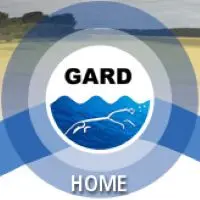Published: 26 November 2025

Below is the Red Line map – this shows the increased amount of land that Thames Water will be taking, up to 38 sq km from 12 sq km.
The remaining TW event dates are:
Weds 26 Nov Wantage Beacon 2 – 8pm
Thurs 27 Nov Milton House Hotel Steventon 2 – 8pm
From GARD: What’s happening now?
Consultation response to Thames Water’s submission for Planning Consent (Development Consent Order, DCO). Dates
- DCO Consultation Nov 2025 – Jan 2026
- DCO application submitted – late 2026
New facts that have emerged:
- Costs have trebled, from £2.2 to £7+ billion (since the Rapid Gate 3 submission).
- Land area reserved for the reservoir:
TW now requires 38km2 of land to meet biodiversity/flood-mitigation needs, to relocate solar farms, and to control land along every watercourse. See the red-line map. - Questions about public access due to security and water quality issues remain unanswered. TW responsible for rewilding acres of land that doesn’t add to nature but replaces what is lost.
Do you know these facts?
- Unprecedented size: the proposed reservoir will hold 150 million cubic metres of water, most of it above ground: 11 times the volume of Farmoor.
- All costs will fall on the public: Thames Water, Affinity Water and Southern Water billpayers.
- 15–25 metre walls above ground will wall in the water – a storage tank, not new water source.
- Safety: TW has not yet published safety analyses about flooding or dam breach.
- River Thames has not enough settled water to fill Farmoor. Can TW fill a mega-reservoir?
Flooding and design
- Clay compaction trials hampered due to groundwater conditions. The results not disclosed.
- Water table to rise 1 metre because of the reservoir effect on waterways.
- Groundwater flooding requires a full perimeter underground water control drain.
- Groundwater mitigation not yet modelled/proven.
- Local villages already have a water table close to ground level.
- Emergency discharge plans are incomplete. No report published on the effect on the River Thames of a massive release of water. Emergency discharge must be tested every year.
Acceptable alternatives
- TW continues to develop the Severn Thames Transfer plan, which would be quicker, cheaper, more drought resilient and ecologically sustainable. STT would add to an already developing national water grid.
- A smaller reservoir sited off the Zone 3 flood plain would not threaten communities in the same way, nor would it destroy the flood plain.
- Works started – 2029. Works completion extended date: 2043 – 3 years after the target in-service date = 15 years of local chaos.
ACTION: Join GARD and help. Write to your MP and Councillors. Group Against Reservoir Development | GARD